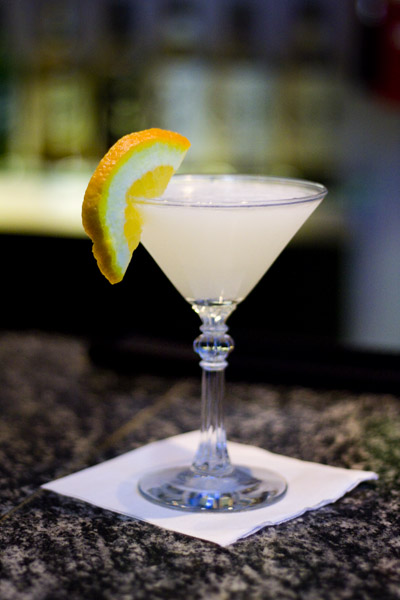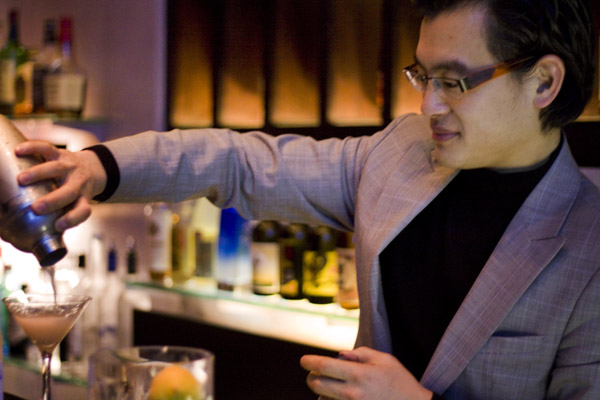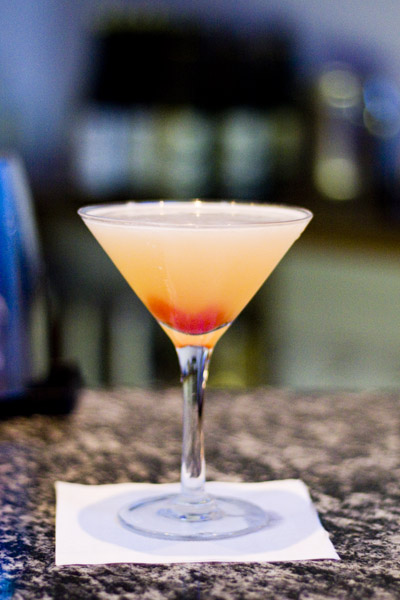Sake Studies
By Roger Kamholz in Food on Jan 24, 2011 5:00PM
One day you will sit down to a nice dinner out - it could be Italian food, maybe French, it doesn't really matter - peruse the restaurant's sake list and make an informed selection. At least that's the vision of Mason Horowitz and John Robinson, founders of Chicago Sake. The young company comprises a sake consultancy and, as of this month, a sake school. To see that vision realized in Chicago, they freely admit, will take some work. But it's clear that for them, bringing more awareness to this somewhat misunderstood and under-appreciated libation is a labor of love.
Being fellow Japanophiles ourselves, we met up with Horowitz recently at Murasaki, one of his favorite sake haunts in the city, to learn more about Chicago Sake and its growing set of class offerings. Through Horowitz's day job at a sake importer, he says, "I found myself collaborating with wine shops, doing sake classes, seminars and tastings, but at the end of the day, I had to be really focused on the brand." And educating people about sake in general while also promoting specific brands often proved difficult. The motivation behind launching Chicago Sake's classes was to focus solely on appreciating the product and recognizing the major stylistic differences among sake varieties. "We don't talk about the brands at all. We just talk about the category of sake." Their goal is for students to experience sake's broad range of flavor and versatility as a complement to food. And with a little basic knowledge, people can easily and confidently explore sake on their own.
Sake (pronounced sah-kay, not sah-key) is made from rice, but brewed like beer - so calling it "rice wine" is a misnomer. Among many misconceptions they're trying to dispel, Horowitz stressed that even though it's a Japanese product, sake can be enjoyed alongside many cuisines - which is why they are encouraging more Chicago restaurants to offer sake lists much like they do for wine. Another cultural nuance lost in translation: drinking warm sake is a seasonal practice in Japan; the same sake may be served chilled in summer and warm in winter. Serving sake piping hot, as you see in America, is often a means to mask the quality of an inferior product.
Horowitz says there are around 1,400 sake brewers in Japan, and many are small, artisan producers that take incredible pride in their product, down to the paper used for the bottle labels. There are five broad types of sake, ranging from the revered dai-ginjo to the more common futsu-shu. Sake can be remarkably light and floral (think white wine) or earthy and full-bodied. Using special fermentation methods, sake makers can carefully manipulate their product to create subtly layered flavors.
Horowitz and Robinson collaborate with Kerry Tamura, head bartender at Murasaki, to develop Chicago Sake's courses. (Many of the classes are held at Murasaki, as well.) Besides introductions to sake, they also offer instruction on shochu, another versatile Japanese spirit yet to make much of a splash in Chicago. Shochu can be made from rice, barley, sweet potatoes, or combinations of the same. Some varieties are aged in uncharred cedar casks, lending a pale golden color to the spirit. Tamura poured us a flight of shochus to demonstrate its range. With alcohol volumes around 20 to 25 percent, shochus pack strong flavor backbones without much alcohol "heat" obscuring the expression of the grain or vegetable base. Some come off mellow and approachable, while others can be yeasty, nutty and dazzlingly complex.
Of course, we couldn't leave without also sampling some cocktails - another class topic they have in the works. Tamura is a self-taught mixer, yet his natural talent is evident in his creations. (His Poca-tini made TimeOut Chicago's "100 Best Things We Ate" list for 2010.) "We are just a small guy," Tamura says, referring to Murasaki's place in the cocktail scene of Chicago. "What we do know is Japanese flavors and Japanese spirits, which I think is still an untapped area with regards to cocktails." Several of his signature drinks feature sake, the Sake-lada being a standout; it delivers a pleasant overture of citrus, followed by a wash of St. Germain-powered floral sweetness.
Chicago Sake's upcoming classes are listed here. If you want to do some informal investigating on your own in the meantime, Horowitz suggests visiting Murasaki as well as Katsu, Arami and Chizakaya. And maybe one day soon that list will be a good deal longer.
Sake-lada
1 ounce Moonstone Coconut Lemongrass Sake
1.5 ounces G Sake Joy
1/2 ounce St. Germain Elderflower Liqueur
Splash lemon and lime juices
Splash tonic water
Add tonic last after above ingredients are shaken and poured into a Martini glass. Garnish with a lemon.
Murasaki is located at 211 East Ontario Street.


